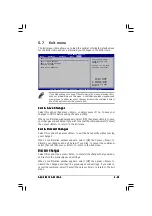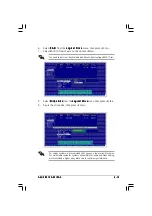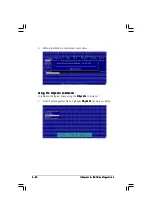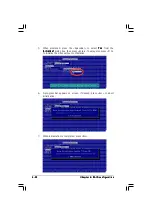
A S U S R S 1 2 0 - E 3 / P A 4
A S U S R S 1 2 0 - E 3 / P A 4
A S U S R S 1 2 0 - E 3 / P A 4
A S U S R S 1 2 0 - E 3 / P A 4
A S U S R S 1 2 0 - E 3 / P A 4
6 - 1 1
6 - 1 1
6 - 1 1
6 - 1 1
6 - 1 1
6.2.2
6.2.2
6.2.2
6.2.2
6.2.2
Creating a RAID 10 set
Creating a RAID 10 set
Creating a RAID 10 set
Creating a RAID 10 set
Creating a RAID 10 set
You can create a RAID 10 set using four identical hard disk drives.
To create a RAID 10 set using the E a s y C o n f i g u r a t i o n
E a s y C o n f i g u r a t i o n
E a s y C o n f i g u r a t i o n
E a s y C o n f i g u r a t i o n
E a s y C o n f i g u r a t i o n option:
1.
From the utility main menu, highlight C o n f i g u r e
C o n f i g u r e
C o n f i g u r e
C o n f i g u r e
C o n f i g u r e, then press <Enter>.
2.
Use the arrow keys to select Easy Configuration
Easy Configuration
Easy Configuration
Easy Configuration
Easy Configuration, then press <Enter>.
3.
The ARRAY SELECTION MENU
ARRAY SELECTION MENU
ARRAY SELECTION MENU
ARRAY SELECTION MENU
ARRAY SELECTION MENU displays the available drives connected
to the SATA ports. Select the drive(s) you want to include in the RAID
set, then press <SpaceBar>. When selected, the drive indicator changes
from R E A D Y
R E A D Y
R E A D Y
R E A D Y
R E A D Y to ONLIN A[X]-[Y]
ONLIN A[X]-[Y]
ONLIN A[X]-[Y]
ONLIN A[X]-[Y]
ONLIN A[X]-[Y], where X is the array number, and Y is
the drive number.
The information of the selected hard disk drive displays at the bottom of
the screen.






























